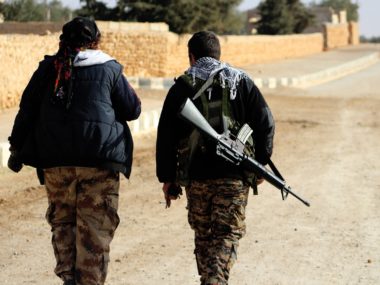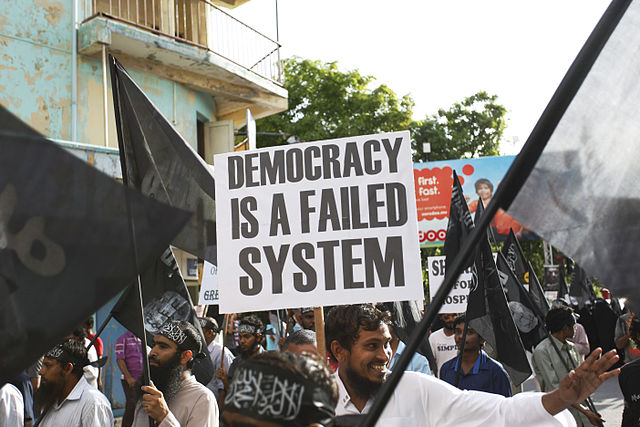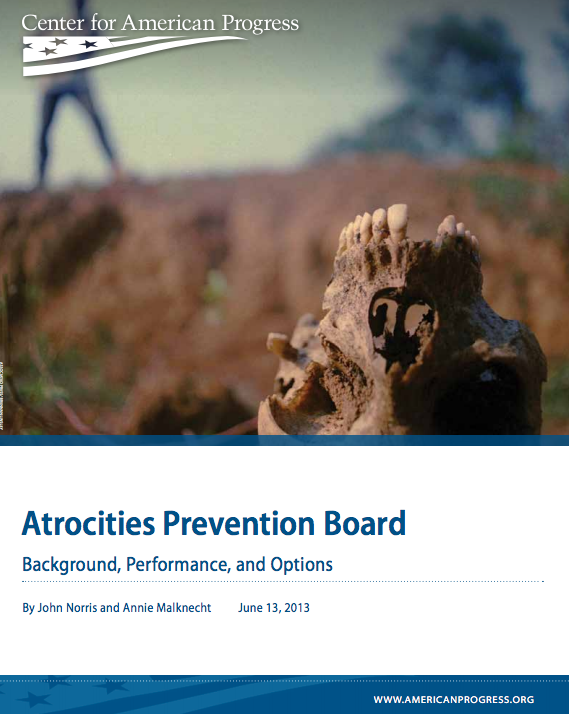By Roland Paris
On Monday, the United Nations released its annual report on children in armed conflict. Grisly findings from the Syrian conflict made headlines around the world, including the revelation that children “between 8 and 13 were forcibly taken from their homes and used by soldiers as human shields, placing them in front of the windows of buses carrying military personnel into the raid on villages.”
It was an appalling account. So was the news about Syrian children being tortured while in detention. One can only hope that U.S. State Department spokesperson Victoria Nuland was correct when she warned pro-regime forces in Syria that the “international community can and does learn what units were responsible for crimes against humanity, and you will be held responsible for your actions.”
Syria is just one of many countries where children are being targeted and abused in war. The UN report identifies many other cases around the world – including in Afghanistan, Chad, Democratic Republic of Congo, Iraq, Somalia, and Sudan. The UN does important work in tracking and publicizing these abuses and their perpetrators.
At the same time, we should not lose sight of the fact that there are other, less obvious ways in which war damages children. The UN report does not consider the effects of armed conflict on development, including indicators of children’s well-being. As it turns out, there is an interesting new article on these indirect effects, written by four Norway-based researchers: Scott Gates, Håvard Hegre, Håvard Mokleiv Nygård, and Håvard Strand. The article is still in press and will soon appear in the journal World Development, but a pre-publication version is available on the journal’s website.
In the article, Gates and his colleagues examine the causal effects of armed conflict on progress towards achieving the Millennium Development Goals. These goals include several that directly address the well-being of children, including education, poverty and hunger, and child and maternal health.
The causal effect of war on infant mortality is particularly striking. The authors find that:
“Conflicts generate a surplus infant mortality at the same level as direct deaths – for every soldier killed in battle, one infant dies that would otherwise have survived through the indirect effects of conflict.”
Gates and his colleagues also find clear, strong, detrimental effects of armed conflict on poverty, hunger, and access to water. These effects tend to linger, even after the termination of hostilities.
This evidence matters, because sudden, dramatic events tend to overshadow less visible, slow-motion disasters. The impact of war on development is arguably more harmful to children than the direct effects of killing and abuse, which receives more attention. While the direct impacts are horrific, and the UN is right to produce an annual report on such acts – and to “name and shame” the perpetrators – this should not obscure the less visible but more insidious effects of armed conflict on children.







4 comments
Doesn’t the World’ Biggest Arms Dealer serve as a root cause for promulgating world conflict and its effect on children?
To all the authors of this intriguing new blog:
I’m excited to have direct access to expert analysis on these issues. However, I’m only going to become a regular reader if you use my time wisely.
In short: Get to the point and provide something valuable. Readers of a blog like this one likely will have much to read; my international news RSS feed has over 50 sources and hundreds of articles each day. No matter how valuable your analysis, I can’t wade through 6 paragraphs to find one nugget of knowledge.
In the example of the post above (and I’m sorry to pick on it): When I saw the headline, I started reading with the question, ‘what is the current state-of-the-art knowledge and analysis on the indirect toll of armed conflict on children?’ I was very interested in what an expert could tell me.
To get to what I wanted, I read five paragraphs of introduction to the issue, and then I only got a small amount of data without analysis or background (the one-to-one ratio) plus vague, somewhat obvious claims (for example, “strong, detrimental effects of armed conflict on poverty, hunger, and access to water”). The whole post could have a paragraph. At least, start with the meat of the article and fill in the rest after that.
I’m sure you have much to tell me, but please write for busy people!
Dear Citizen, Many thanks for your constructive feedback on how we can improve our service to our readership. I for one will take this suggestion to heart, and I’ve forwarded your comment along to each of our authors in case they missed it on this post. Thanks again for your interest and for taking the time to give us your thoughts.
Thanks for your comment. Please note that the post contains a link to the full article if you are interested in reading the details of the findings.
As for being too busy to read six paragraphs, perhaps you should stick to Twitter? My account is @rolandparis if you’re interested in following.